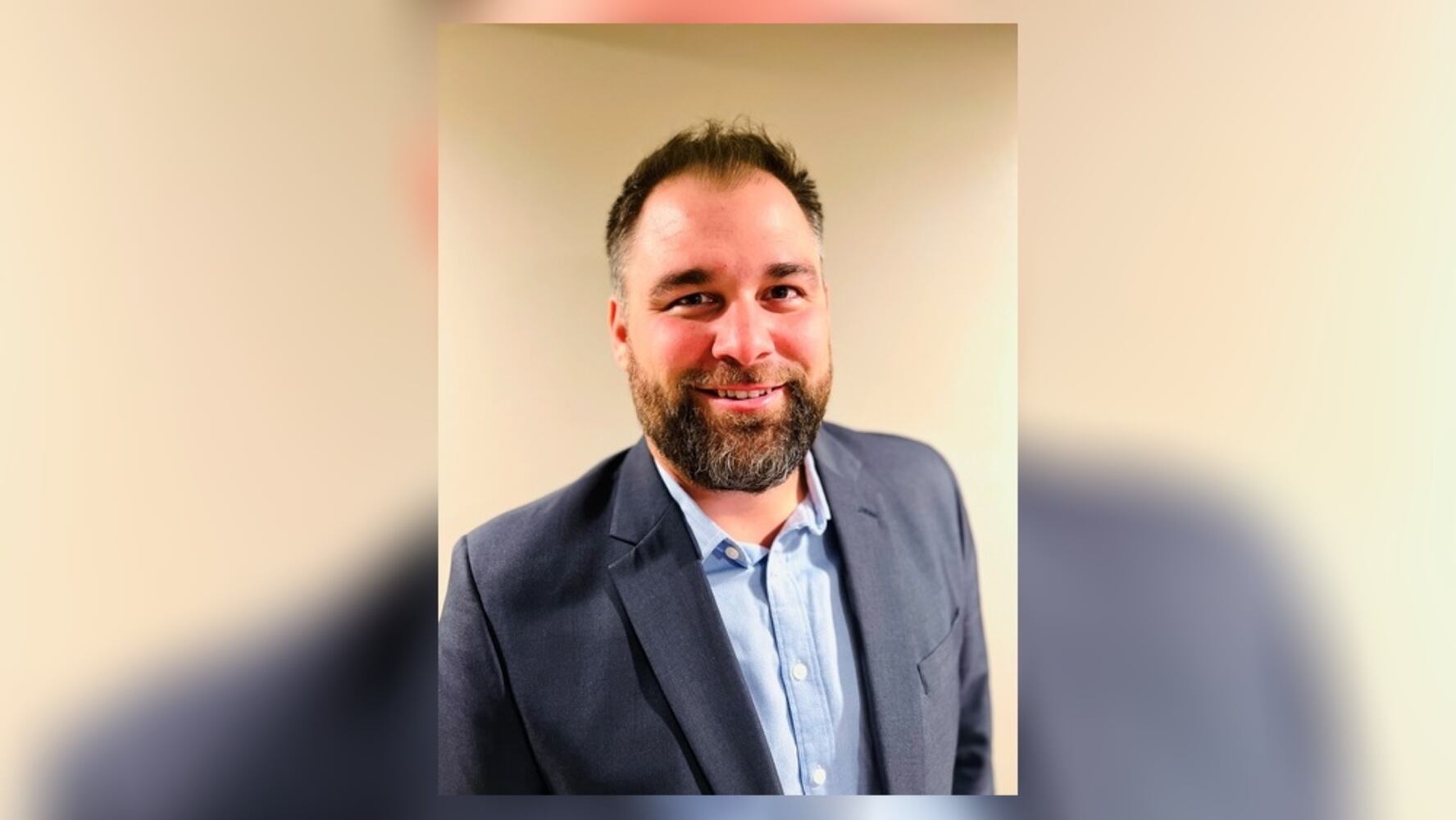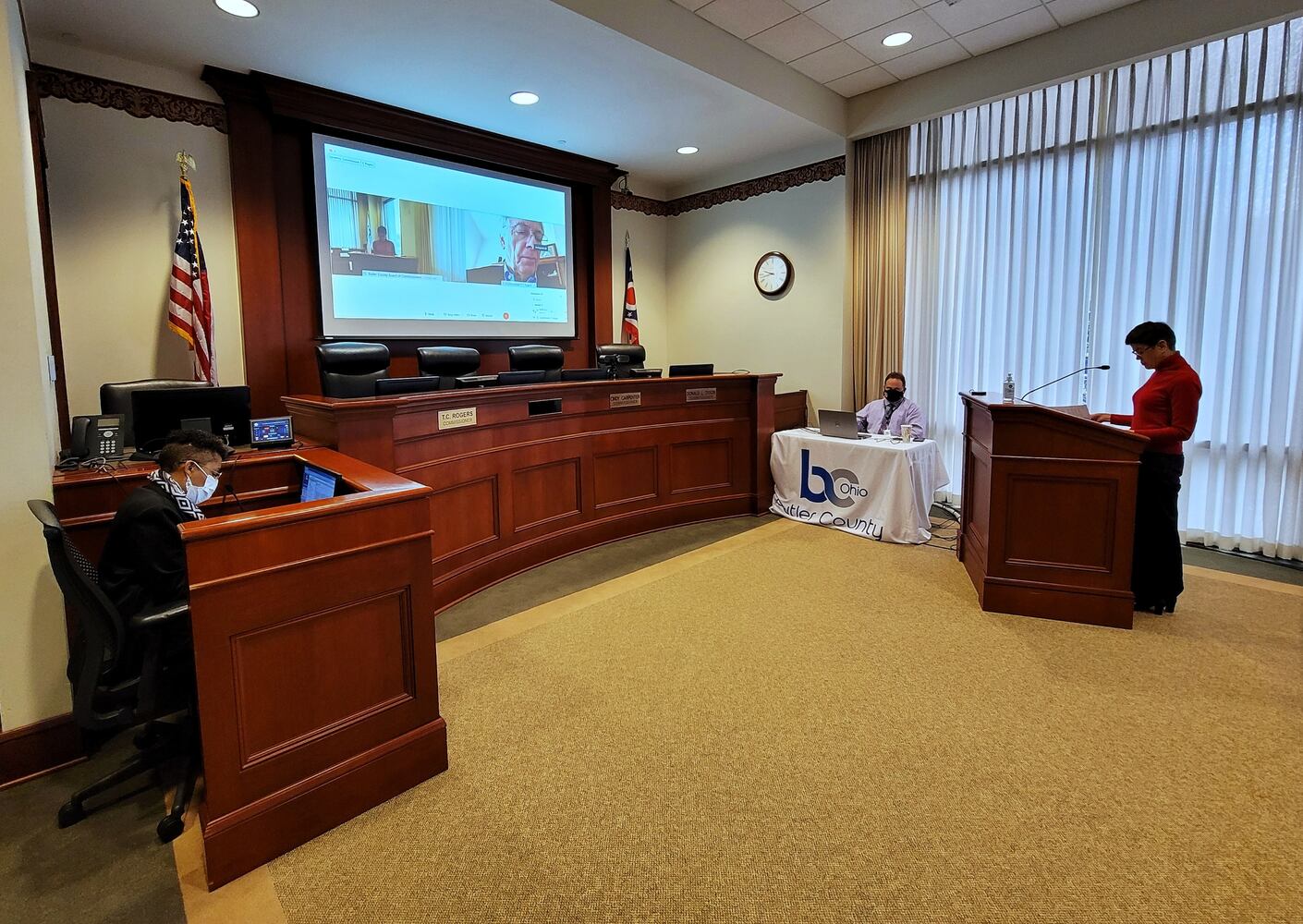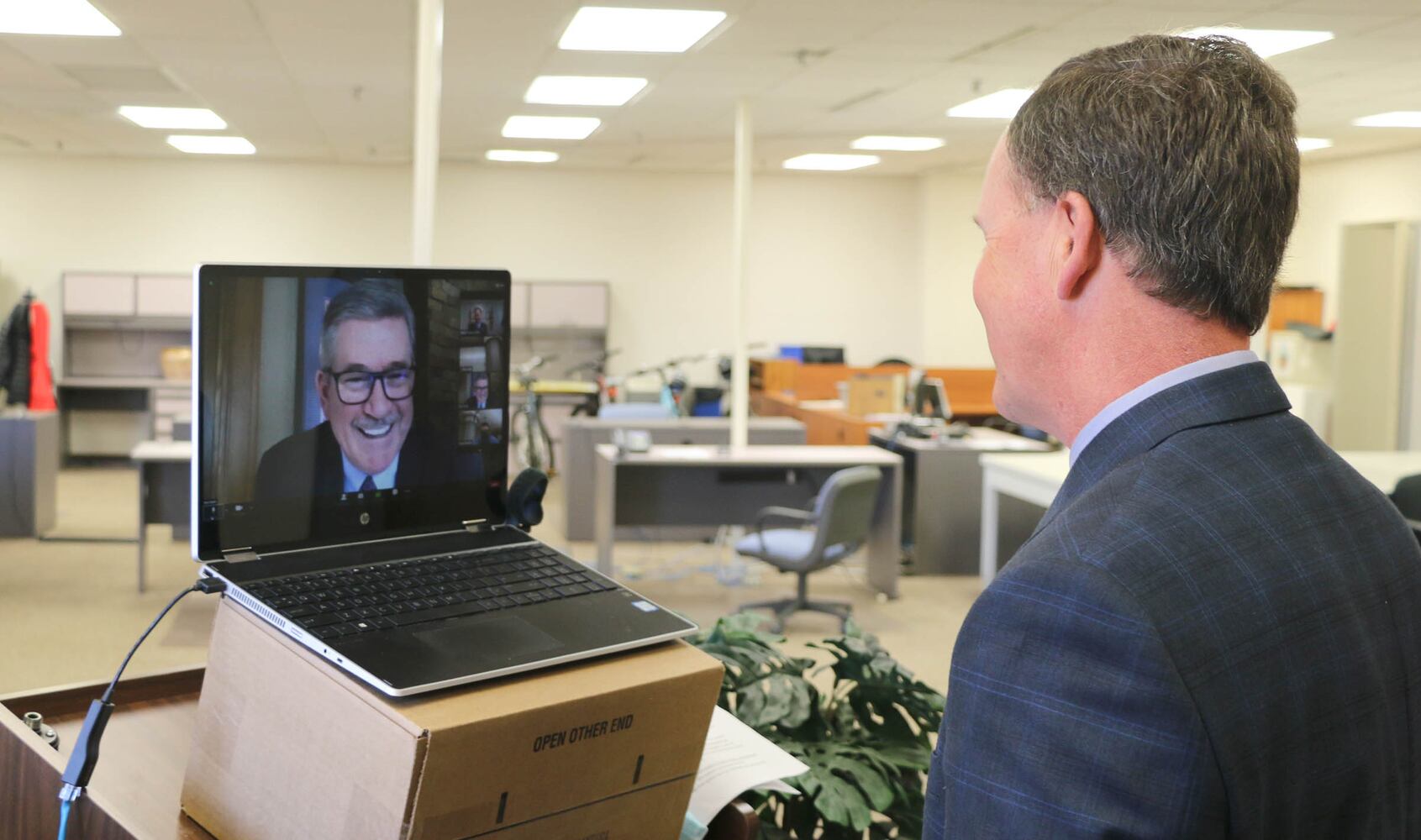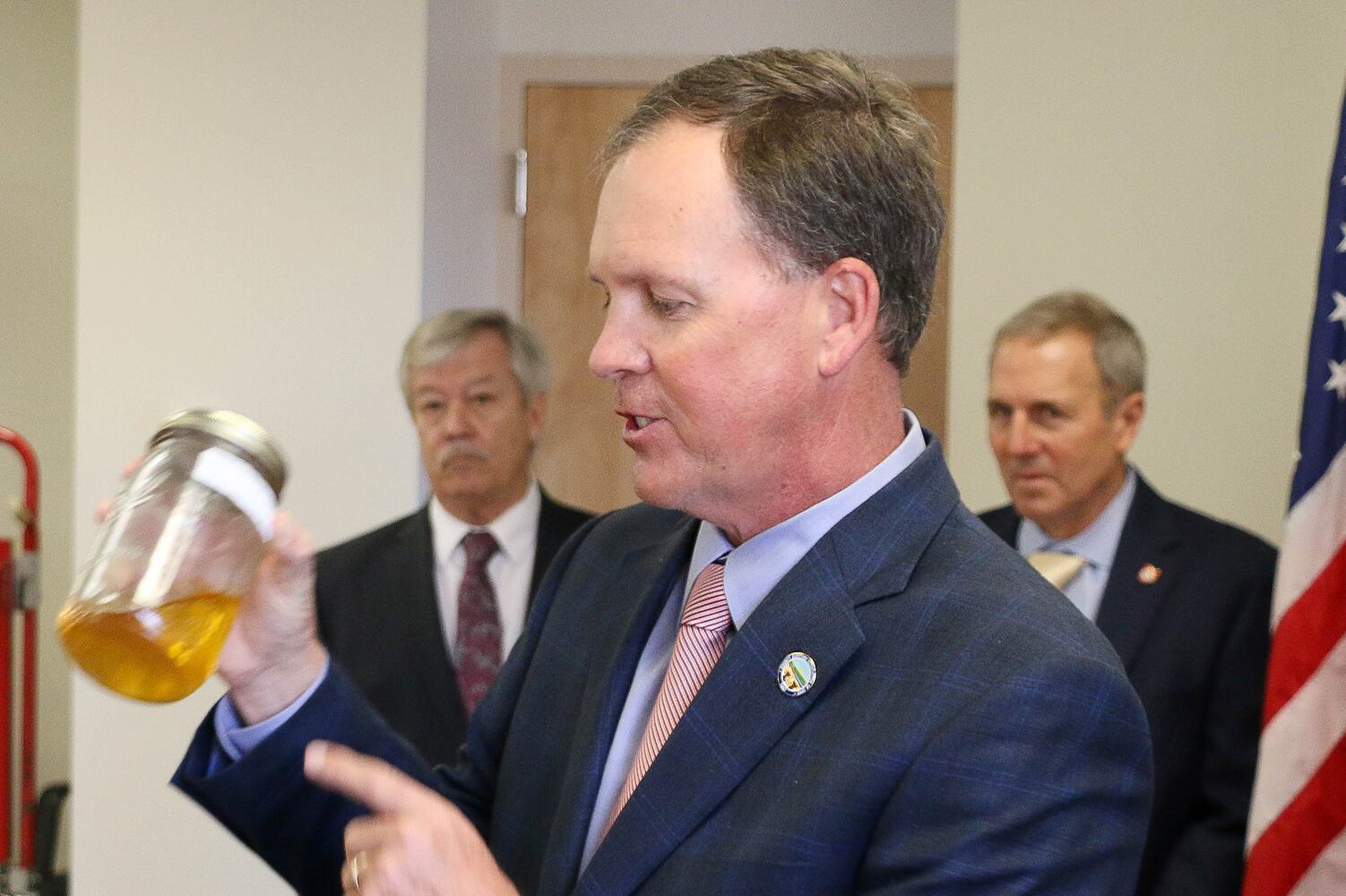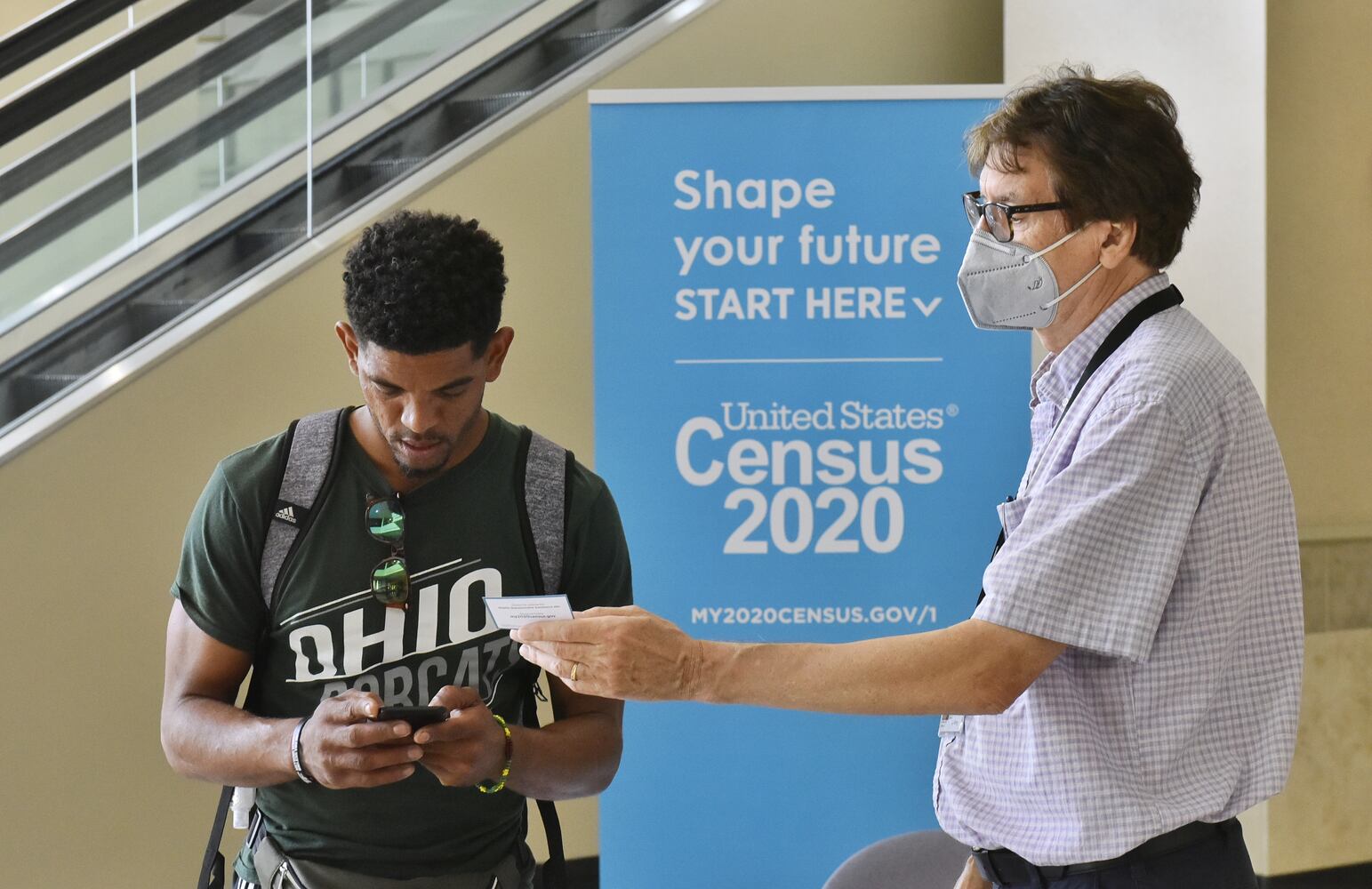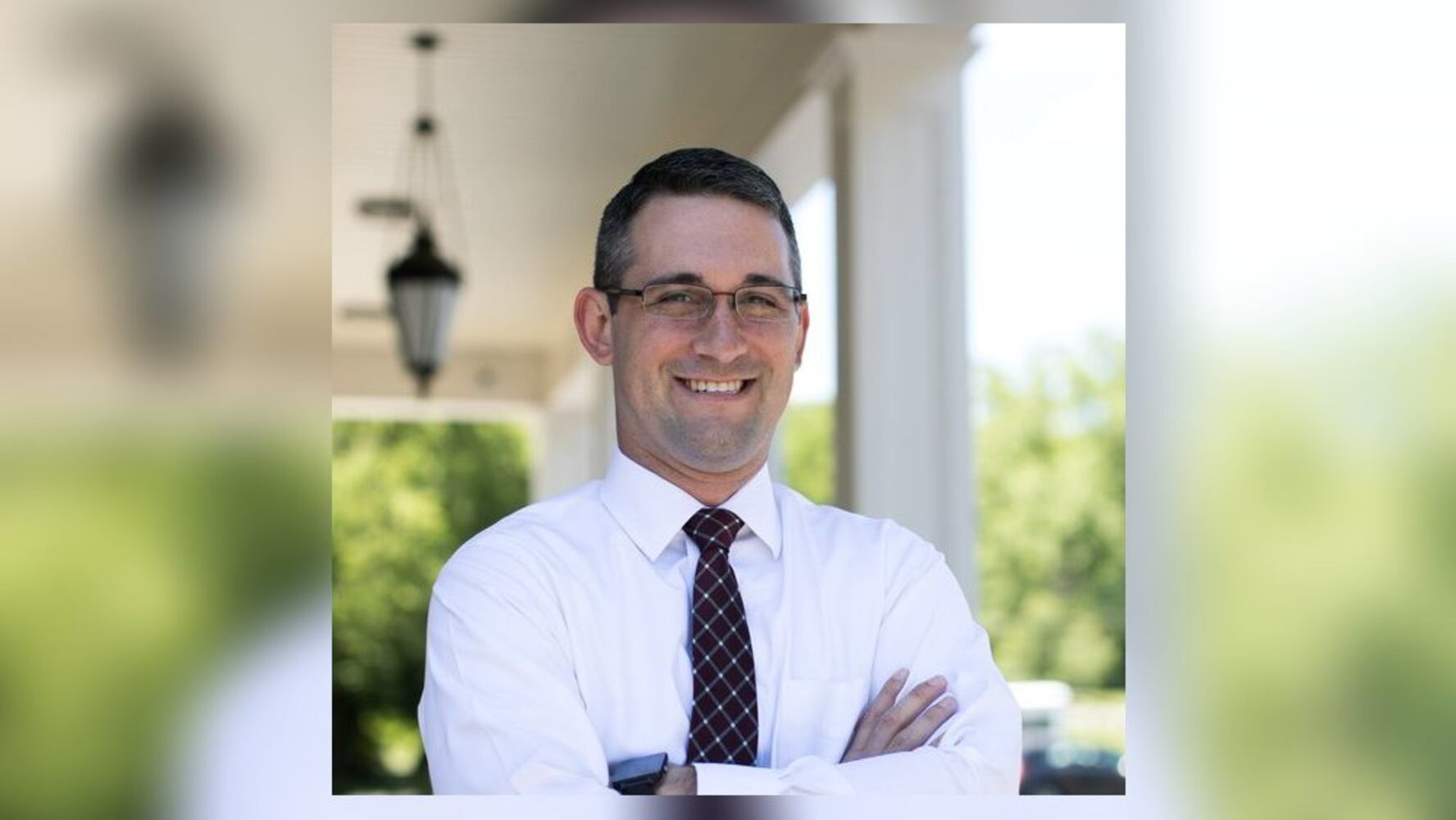How does one spend $75 million wisely?
The Butler County commissioners were allocated nearly $75 million in federal American Rescue Plan funding and are now mulling $143.7 million worth of requests from outside entities and county offices and departments.
Commissioner Cindy Carpenter crisscrossed the county for months meeting with local officials to get their thoughts on how the windfall should be spent. Then the commissioners held work sessions with most of those who were dialing for their dollars. The federal deadline for spending the money is the end of 2024.
Requests run the gamut from new educational and economic development opportunities to addressing social service needs of the county. The largest pitch was for $24 million from Butler Tech to create a workforce pipeline to advanced aviation and manufacturing jobs, with new training facilities in Middletown and Hamilton.
Credit: Denise G. Callahan/STAFF
Credit: Denise G. Callahan/STAFF
Commissioner Don Dixon told the Journal-News the three commissioners understand this is an awesome responsibility.
“When you’re talking about $75 million bucks you get all kinds of pressure from different people and organizations who want a part of that,” Dixon said. “You know they can all come up with a good story and a good plan, but everybody’s got an idea and most of them don’t work. So you have to vet this stuff very carefully and look at what you can deliver and serve that can’t ever happen any other way.”
Taxpayers protest tax bill hikes due to 2020 reassessment
Butler County Auditor Roger Reynolds’ office performed the mandatory 2020 property reassessment which caused sticker shock for some residents and prompted several to challenge their new values.
A few Hamilton residents told the Journal-News their bills went up more than $800 and many property owners challenged their new values to the county auditor’s Board of Revision.
The county collected $564 million in property taxes this year — including $12.3 million in delinquent amounts — which is $42.3 million more than last year. This was “highest real estate tax collection ever,” according to County Treasurer Nancy Nix.
The county property tax jump was due in part to the state-mandated 2020 property reassessment. All 165,000 parcels were reassessed last year and increases varied by neighborhood according to recent sales data. The state ordered an average 20% increase, and Reynolds is battling that amount in an appeal to the state tax commissioner.
The average increase in county property values was 14.5% with the highest increase in Lemon Twp. at 32%, and the lowest was 10.1% in Morgan Twp. Reynolds received 858 applications to challenge property values to the Board of Revision and 53 have appealed their decisions to the state. Liberty Center owners asked for a $31 million value reduction and the board agreed to $14 million.
The panel also received 21 applications from businesses totaling around $103.3 million to cut property values, based on a new state law that allows reduced values due to the negative impact of the pandemic. The largest came from Liberty Center with a $60 million reduction request the board dropped the value $15 million.
Millions of dollars were doled out to help residents pay housing bills
Butler County has disbursed $8.8 million in federal COVID-19 relief, helping both renters and homeowners meet their housing and utility obligations during the pandemic, and officials are considering tapping into $9 million more.
As part of the $900 billion federal omnibus bill passed in late December, lawmakers set aside $25 billion to help renters who struggled to meet their housing and utility bill obligations. Butler County qualified for $11.4 million of the money. The federal government then announced a second wave of funding and the county has access to an additional $9 million.
Credit: Submitted
Credit: Submitted
The commissioners did not accept the second round of funding yet — they wanted to gauge the need first — but County Administrator Judi Boyko told the Journal-News they will discuss accepting the $9 million early next year.
The commissioners enlisted the aid of Supports to Encourage Low-income Families (SELF) in March to manage the program. SELF received additional COVID relief that also included help for homeowners. All tolled Executive Director Jeffrey Diver said they have helped 2,515 renters and homeowners with housing obligations and utilities so far.
2020 U.S. Census will be boon for the county
The data from the 2020 U.S. Census were released this year, and with 22,227 new residents, it could mean an additional $40 million in new state and federal funding to help social service programs, roads and local governments.
The rule of thumb is that every person counted equates to about $1,800 in state and federal funding for things like Medicaid, food stamps, roads and other programs supported by outside sources.
Butler County Development Director David Fehr said residents will reap the benefits because new funding levels for the next 10 years will be based on a population of 390,357. He said a $40 million funding bump “spread across all the different federal federal programs doesn’t sound unreasonable.”
The county as a whole grew by 6% from 368,130 counted in 2010.
“From a community development perspective and a barometer of being a location of choice for residents and businesses the increase in population slightly less than 25,000 is a metric that demonstrates we’re doing well in the performance of preferred place to live or have your business. That’s a wonderful testament for Butler County,” County Administrator Judi Boyko said.
County has some new leaders
Butler County finally has a second in command after years of off-and-on hunting for an assistant county administrator. The commissioners hired Fairfield’s assistant city manager Scott Timmer for $135,000 per year in July.
Commissioner Don Dixon said “the opportunity became available” when the majority of Fairfield city council decided to conduct a search for a new city manager in May, rather than automatically promote Timmer, “somebody said why don’t we take a look at him and that’s how we got him.”
Timmer is responsible for helping County Administrator Judi Boyko develop “long-term strategic plans, policies and procedures and performance measurements to enhance county programs and services.” New to the position description is the emphasis on economic development and direct involvement with the Butler County Port Authority as its administrator — a position that had been vacant since August 2020.
Credit: Priovide
Credit: Priovide
Butler County has a new director of assets, procurement and projects, and the commissioners say he must deliver a return on the taxpayers’ investment in him.
The commissioners approved hiring Chris Hacker in March at an annual salary of $90,100. He was previously the assistant finance director for the city of Centerville and also worked as Hamilton’s purchasing coordinator for eight years.
Commissioner Don Dixon admitted governments often justify spending big taxpayer dollars hiring people because they claim the position will pay for itself, “but then nobody goes back and looks. We go back an look.”
Hacker’s first responsibilities this year was to jumpstart the long-awaited space utilization study because officials believe 10 to 15% of their buildings are underutilized.
Long-time Job and Family Services Executive Director Bill Morrison retired this year and the commissioners promoted from within to run the agency.
Former Children Services Director Julie Gilbert is now running the entire social services agency and responsible for about 350 employees in Children Services; JFS, which manages public assistance; OhioMeansJobs and the Child Support Enforcement Agency.
Commissioner T.C. Rogers said Morrison is leaving one of the county’s largest operations in a strong position.
“We truly appreciate his foresight and initiative to make a better system for Butler County,” Rogers said. “He’s been a major force and we recognize that, he’s set a standard that those behind him are going to have to follow.”
After more than a year, Butler County has finally found a new permanent Care Facility administrator, the commissioners approved hiring Evelyn McGee earlier this month at an annual salary of $92,500. She has been working at the county-owned nursing home since September getting up to speed with retired administrator Chuck Demidovich.
The home has had a revolving door of both management and front line employees coming and going and that has caused issues because “there hasn’t been consistency from a management perspective.”
Butler County sheriff charges communities 911 dispatch fees
Several Butler County communities that have their own police departments but use the sheriff’s dispatch services caught a financial break when the county commissioners agreed to cover $390,370 in fees for this year.
Officials balked earlier this year when they were told they would start being billed for using the sheriff’s office to dispatch their police to emergencies. Some said it wasn’t fair, others said they weren’t given enough time to budget funds and some said they just can’t afford it.
The commissioners agreed to use CARES coronavirus relief money to pay the fees for six communities: Fairfield Twp. ($291,637), Ross Twp. ($75,780), Oxford Twp. ($34,650), New Miami ($47,541), Seven Mile ($5,763) and MetroParks ($6,999).
Land bank receives $1.5 million from the state to fight blight
There is a $1.5 million pot of blight busting money coming to Butler County and the land bank is lining up blighted properties to demolish.
When the state biennial budget passed, it allocated $150 million for commercial and residential demolitions and $350 million for brownfield remediation. Each of the 88 counties will automatically receive $500,000 for demolition and $1 million for brownfield remediation, which is the removal of hazardous materials left when industrial, or even commercial such as dry cleaners blight is downed.
The remaining $106 million in demolition and $262 million for brownfields will be disbursed “first come, first served.”
The Butler County Land Bank has been reaching out to communities hoping to line-up “shovel-ready” projects so when the first $1.5 million is consumed they can get as much of the second pot as possible to eradicate blight countywide. Officials have said the response has been a little lukewarm at this early juncture.
Several major lawsuits were resolved
The county and most jurisdictions joined the state’s OneOhio opioid litigation and it was settled this year. The county will receive between $3.8 million and $5.4 million directly over 18 years and have access to a share in $38 million to $54.4 million more. The county’s share is part of a nationwide $26 billion settlement brokered by state attorneys general — with the three largest opioid distributors Cardinal, McKesson and AmerisourceBergen. Ohio’s share was $808 million.
Nearly 4,000 jurisdictions nationwide filed lawsuits in state and federal courts years ago when the heroin epidemic was killing their residents and budgets, trying to deal with the pervasive problem. The commissioners sued 20 drug makers and distributors in federal court in 2017, they sought $5 million in that lawsuit, which is now part of the multidistrict litigation ongoing in the Cleveland federal court.
They also recently settled with Johnson & Johnson. Chief Assistant Prosecutor Dan Ferguson said the county will receive between $875,190 and $1.25 million directly over nine years from J&J and has access to a larger pool of $8.8 million to $12.5 million.
Ferguson said previously the long pay-out periods in the settlements were by design and for the greater good.
“These are not lump sums that get dropped into anybody’s bank account, they’re time payments,” Ferguson said. “Part of the object of doing the time-payments, I think part of the courts’ object is they don’t really want to see these drug distributors run into bankruptcy, because frankly, society needs many of the products they make and distribute.”
Another big court action involved a lawsuit filed by some Madison Schools parents in 2018 over arming staff made it to the Ohio Supreme Court this year. Now school staff members armed by their districts in Ohio will need the same level of training that peace officers receive.
Erin Gabbard, one of the parents who challenged the policy, said she is relieved the high court ruled in favor of the more robust training.
“Like any parents, we just want our kids to be safe,” Gabbard said. “The Madison school board armed minimally-trained staff, one of whom even failed the accuracy test multiple times. Once this ruling is implemented, parents will at least know that the teachers who carry firearms in our schools are properly trained, as required by state law.”
The New Miami speed camera case has been crawling through the courts for years, but early next year it will make a final stop in the Ohio Supreme Court where speeders will argue why they should be repaid about $3.4 million.
In a 4-3 decision last April, the high court accepted jurisdiction over the appeal filed by a group of about 33,000 speeders who took the tiny village to court in 2013 over what they said was an unconstitutional, unmanned speed camera program. The village used an out-of-state third party to manage the program.
About the Author
